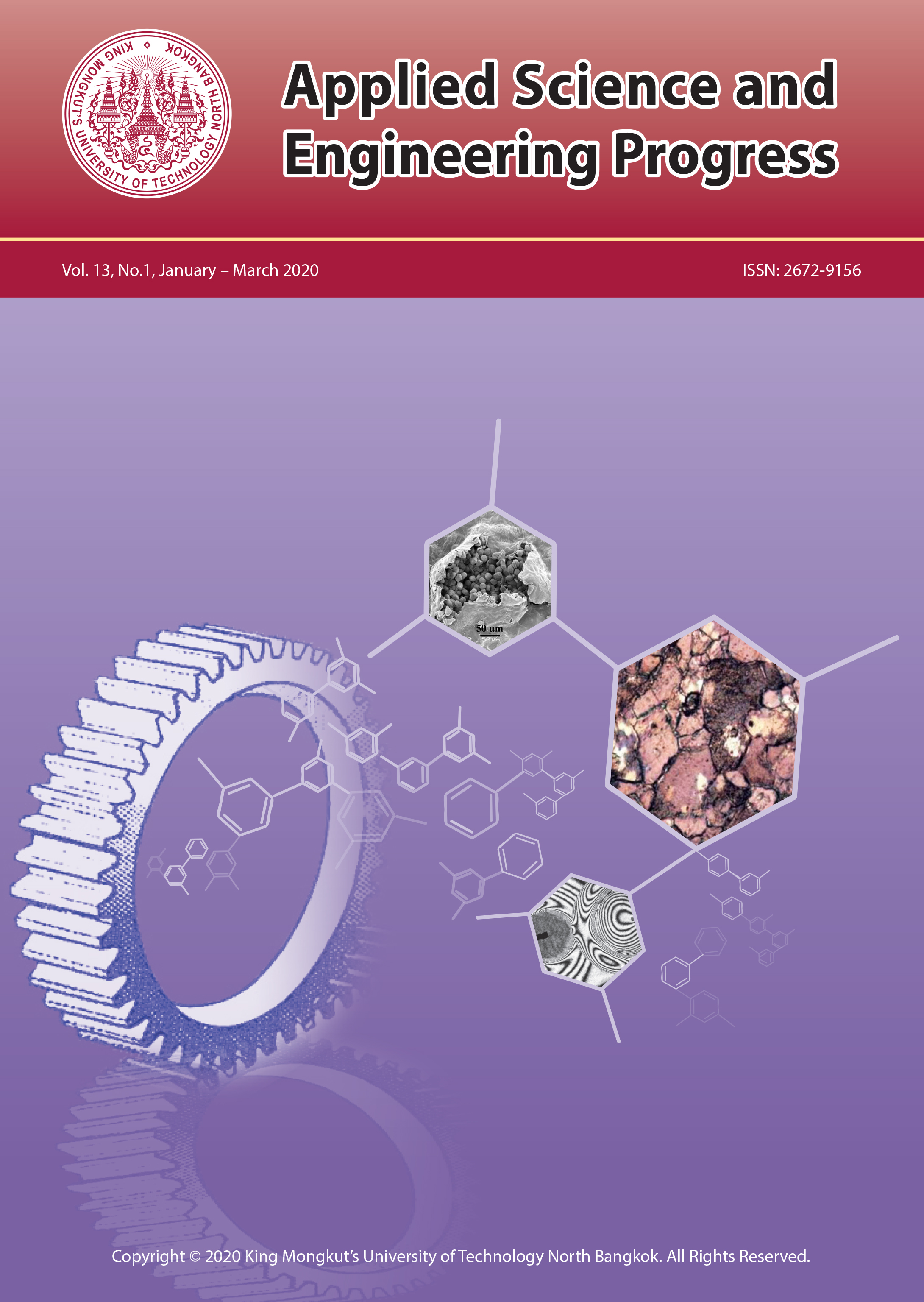Design and Implementation of Energy Recovery System from Autoclaves in Fiber Cement Industry
Main Article Content
Abstract
The fiber cement composite process has extremely high fuel consumption and a lot of waste energy released. This study focuses on the recovery methods from two waste heat streams; the condensate and the exhaust steam from the autoclaves. An analysis of the heat loss from the autoclave shell showed that the optimum insulation thickness is 0.085 mm. To recover heat from either condensate or exhaust steams, a pinch location can recover the waste heat for fresh boiler feed water at 100°C. Introduction of multiple heat exchanger optimization and control proposed two series of shell and tube exchangers for the condensate and the exhaust steams. The fuel consumption from the heat recovery can approximately be reduced to 8.37 MTHB/year with a payback period of one and a half year.
Article Details
References
[2] D. A. Reay, Heat Recovery Systems: A Directory of Equipment and Techniques. New York: Halsted Press, 1979.
[3] I. Johnson, W. T. Choate, and A. Davidson, Waste Heat Recovery. Technology and Opportunities in US Industry. Laurel, MD: BCS, Inc., 2008.
[4] B. L. Capehart, W. C. Turner, and W. J. Kennedy, Guide to Energy Management. Lilburn, Georgia: The Fairmont Press, Inc., 2006.
[5] L. M. Romeo and R. Gareta, “Neural network for evaluating boiler behaviour,” Applied Thermal Engineering, vol. 26, no. 14–15, pp. 1530–1536, 2006.
[6] J. R. Vasquez, R. R. Perez, J. S. Moriano, and J. P. Gonzalez, “System identification of steam pressure in a fire-tube boiler,” Computers & Chemical Engineering, vol. 32, no. 12, pp. 2839–2848, 2008.
[7] J. M. Rhine and R. J. Tucker, Modelling of Gas- Fired Furnaces and Boilers and other Industrial Heating Processes. New York: McGraw-Hill, 1991.
[8] J. Bujak, “Optimal control of energy losses in multi-boiler steam systems,” Energy, vol. 34, no. 9, pp. 1260–1270, 2009.
[9] Z. Niu and K.-F. V. Wong, “Adaptive simulation of boiler unit performance,” Energy Conversion and Management, vol. 39, no. 13, pp. 1383–1394, 1998.
[10] S. Lu, “Dynamic modelling and simulation of power plant systems,” The Journal of Power and Energy, Part A of the Proceedings of the Institution of Mechanical Engineers, vol. 213, no. 1, pp. 7–22, 1999.
[11] E. Adam and J. Marchetti, “Dynamic simulation of large boilers with natural recirculation,” Computers & Chemical Engineering, vol. 23, no. 8, pp. 1031–1040, 1999.
[12] L. Changliang, L. Jizhen, N. Yuguang, and L. Weiping, “Nonlinear boiler model of 300 MW power unit for system dynamic performance studies,” in Proceedings ISIE 2001, 2001, pp. 1296–1300.
[13] F. M. Lea, The Chemistry of Cement and Concrete, 3rd ed., London, England: Edward Arnold Ltd., 1970.
[14] U. Vengateson, “Design of multiple shell and tube heat exchangers in series: E shell and F shell,” Chemical Engineering Research and Design, vol. 88, no. 5–6, pp. 725–736, 2010.
[15] S. Ahmad, B. Linnhoff, and R. Smith, “Design of multipass heat exchangers: An alternative approach,” Journal of Heat Transfer, vol. 110, no. 2, pp. 304–309, 1988.


